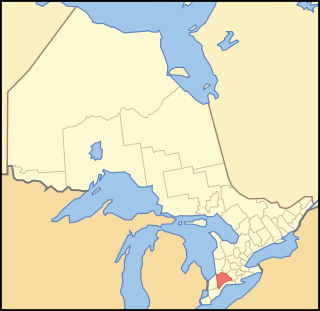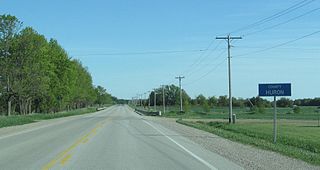| |||||
| Centuries: | |||||
|---|---|---|---|---|---|
| Decades: | |||||
| See also: | List of years in India Timeline of Indian history | ||||
Events in the year 1845 in India.
| |||||
| Centuries: | |||||
|---|---|---|---|---|---|
| Decades: | |||||
| See also: | List of years in India Timeline of Indian history | ||||
Events in the year 1845 in India.

The Great Famine, also known as the Great Hunger, the Famine and the Irish Potato Famine, was a period of starvation and disease in Ireland lasting from 1845 to 1852 that constituted a historical social crisis and subsequently had a major impact on Irish society and history as a whole. The most severely affected areas were in the western and southern parts of Ireland—where the Irish language was dominant—and hence the period was contemporaneously known in Irish as an Drochshaol, which literally translates to "the bad life" and loosely translates to "the hard times". The worst year of the famine was 1847, which became known as "Black '47". During the Great Hunger, roughly 1 million people died and more than 1 million more fled the country, causing the country's population to fall by 20–25% between 1841 and 1871. Between 1845 and 1855, at least 2.1 million people left Ireland, primarily on packet ships but also on steamboats and barques—one of the greatest exoduses from a single island in history.
The New Zealand Defence Force is the three-branched military of New Zealand. The NZDF is responsible for the protection of the national security of New Zealand and her realm, promoting its interests, safeguarding peace and security, as well as supporting peacekeeping and humanitarian missions. It consists of three services: the Royal New Zealand Navy (RNZN), the New Zealand Army and the Royal New Zealand Air Force (RNZAF), as well as 'tri-service' components. As of June 2023, the NZDF has a strength of 14,996 employees, consisting of 8,669 regular force personnel, 3,260 reserve force personnel and 3,067 civilian members. It is supported by the New Zealand Ministry of Defence (MOD) and is commanded by the Chief of Defence Force (CDF).
Eminent domain is the power to take private property for public use. It does not include the power to take and transfer ownership of private property from one property owner to another private property owner without a valid public purpose. This power can be legislatively delegated by the state to municipalities, government subdivisions, or even to private persons or corporations, when they are authorized to exercise the functions of public character.

Middlesex County is a primarily rural county in Southwestern Ontario, Canada. Landlocked, the county is bordered by Huron and Perth counties on the north, Oxford County on the east, Elgin County on the south, and Chatham-Kent and Lambton County on the west.

The 28th United States Congress was a meeting of the legislative branch of the United States federal government, consisting of the United States Senate and the United States House of Representatives. It met in Washington, D.C., from March 4, 1843, to March 4, 1845, during the third and fourth years of John Tyler's presidency. The apportionment of seats in this House of Representatives was based on the 1840 United States census. The Senate had a Whig majority, and the House had a Democratic majority.

Huron County is a county of the province of Ontario, Canada. It is located on the southeast shore of its namesake, Lake Huron, in the southwest part of the province. The county seat is Goderich, also the county's largest community.
The inclosure acts created legal property rights to land previously held in common in England and Wales, particularly open fields and common land. Between 1604 and 1914 over 5,200 individual acts enclosing public land were passed, affecting 28,000 km2.

The Gaspee affair was a significant event in the lead-up to the American Revolution. HMS Gaspee was a Royal Navy customs schooner that enforced the Navigation Acts around Newport, Rhode Island, in 1772. It ran aground in shallow water while chasing the packet boat Hannah on June 9 off of Warwick, Rhode Island. A group of men led by Abraham Whipple and John Brown I attacked, boarded, and burned the Gaspee to the waterline.

The Liverpool and Bury Railway was formed by an Act in 1845 to link Liverpool and Bury via Kirkby, Wigan and Bolton, the line opening on 20 November 1848. The line became the Lancashire and Yorkshire Railway's main line between Liverpool, Manchester and Yorkshire. Most of it is still open.

The Lunacy Act 1845 or the Lunatics Act 1845 and the County Asylums Act 1845 formed mental health law in England and Wales from 1845 to 1890. The Lunacy Act's most important provision was a change in the status of mentally ill people to patients.
The Commissioners in Lunacy or Lunacy Commission were a public body established by the Lunacy Act 1845 to oversee asylums and the welfare of mentally ill people in England and Wales. It succeeded the Metropolitan Commissioners in Lunacy.
Events in the year 1811 in India.
Civil parishes are small divisions used for statistical purposes and formerly for local government in Scotland.

The Fall River Railroad was a railroad that ran between Fall River and Braintree, Massachusetts, United States. It was formed in 1845 as a merger between three railroads, which opened in phases in 1845 and 1846. The railroad merged into the Old Colony and Fall River Railroad in 1854.

The 1845 United States House of Representatives election in Florida was held on Monday, May 26, 1845, to elect the first United States Representative from the state of Florida, one from the state's single at-large congressional district, to represent Florida in the 29th Congress. The election coincided with the elections of other offices, including the gubernatorial election, the senatorial elections, and various state and local elections.
This is a list of members of the New South Wales Legislative Council from 1843 to 1851. The 1843 Electoral Act prescribed 36 members, 24 to be elected, 6 appointed by virtue of their office and 6 nominated. The appointments and elections were for five year terms and thus occurred in 1843, and 1848. The Speaker was Alexander Macleay until 19 May 1846 and then Charles Nicholson. The parliament was dissolved on 30 June 1851 as a result of the 1851 Electoral Act which increased the number of members in the Council to 54.
The York, Hull and East and West Yorkshire Junction Railway was a proposed railway line, promoted in the mid 1840s, intended to connect York to the East Riding of Yorkshire, England.

The Leeds and York Railway was a proposed railway line, promoted in the mid 1840s, intended to connect York and Leeds. The line lost a significant promoter, the Manchester and Leeds Railway in 1845/6 as a result of a non-competition arrangement between that company and the York and North Midland Railway.
The Fourth Legislative Assembly of the Wisconsin Territory convened from December 5, 1842, to April 17, 1843, from December 4, 1843, to January 31, 1844, from January 6, 1845, to February 24, 1845, and from January 5, 1846, to February 3, 1846, in regular session.